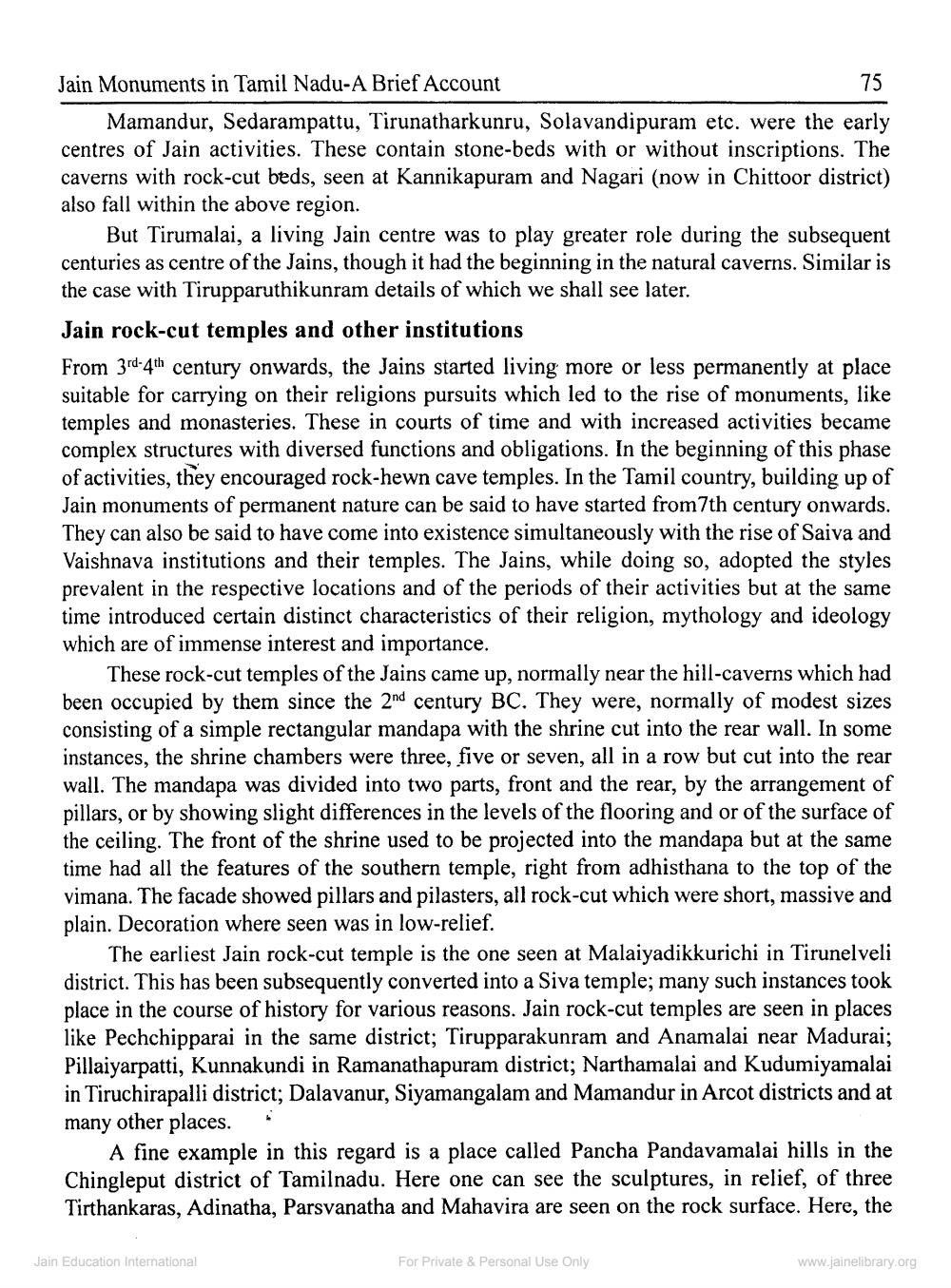________________
Jain Monuments in Tamil Nadu-A Brief Account
75
Mamandur, Sedarampattu, Tirunatharkunru, Solavandipuram etc. were the early centres of Jain activities. These contain stone-beds with or without inscriptions. The caverns with rock-cut beds, seen at Kannikapuram and Nagari (now in Chittoor district) also fall within the above region.
But Tirumalai, a living Jain centre was to play greater role during the subsequent centuries as centre of the Jains, though it had the beginning in the natural caverns. Similar is the case with Tirupparuthikunram details of which we shall see later. Jain rock-cut temples and other institutions From 3rd-4th century onwards, the Jains started living more or less permanently at place suitable for carrying on their religions pursuits which led to the rise of monuments, like temples and monasteries. These in courts of time and with increased activities became complex structures with diversed functions and obligations. In the beginning of this phase of activities, they encouraged rock-hewn cave temples. In the Tamil country, building up of Jain monuments of permanent nature can be said to have started from 7th century onwards. They can also be said to have come into existence simultaneously with the rise of Saiva and Vaishnava institutions and their temples. The Jains, while doing so, adopted the styles prevalent in the respective locations and of the periods of their activities but at the same time introduced certain distinct characteristics of their religion, mythology and ideology which are of immense interest and importance.
These rock-cut temples of the Jains came up, normally near the hill-caverns which had been occupied by them since the 2nd century BC. They were, normally of modest sizes consisting of a simple rectangular mandapa with the shrine cut into the rear wall. In some instances, the shrine chambers were three, five or seven, all in a row but cut into the rear wall. The mandapa was divided into two parts, front and the rear, by the arrangement of pillars, or by showing slight differences in the levels of the flooring and or of the surface of the ceiling. The front of the shrine used to be projected into the mandapa but at the same time had all the features of the southern temple, right from adhisthana to the top of the vimana. The facade showed pillars and pilasters, all rock-cut which were short, massive and plain. Decoration where seen was in low-relief.
The earliest Jain rock-cut temple is the one seen at Malaiyadikkurichi in Tirunelveli district. This has been subsequently converted into a Siva temple; many such instances took
ourse of history for various reasons. Jain rock-cut temples are seen in places like Pechchipparai in the same district; Tirupparakunram and Anamalai near Madurai; Pillaiyarpatti, Kunnakundi in Ramanathapuram district; Narthamalai and Kudumiyamalai in Tiruchirapalli district; Dalavanur, Siyamangalam and Mamandur in Arcot districts and at many other places. .
A fine example in this regard is a place called Pancha Pandavamalai hills in the Chingleput district of Tamilnadu. Here one can see the sculptures, in relief, of three
aras, Adinatha, Parsvanatha and Mahavira are seen on the rock surface. Here, the
Jain Education International
For Private & Personal Use Only
www.jainelibrary.org




